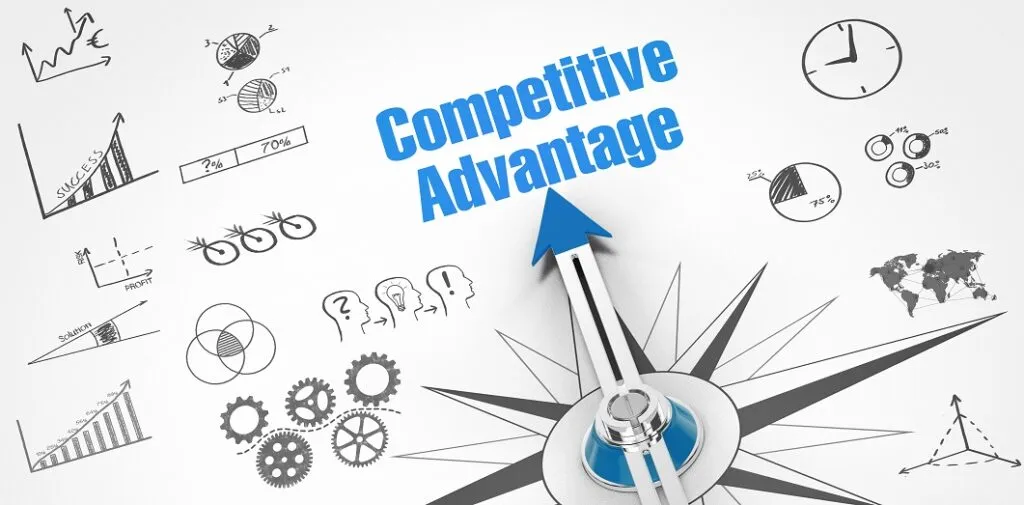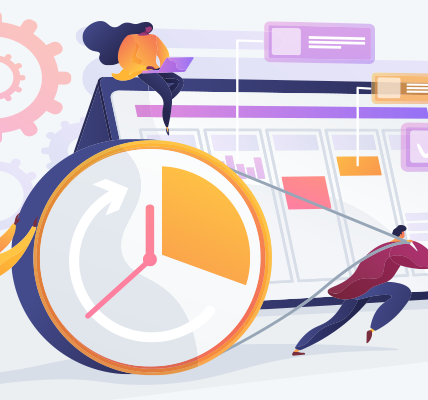In a world that changes faster than quarterly reports, the idea of competitive advantage has evolved from static, defensible moats to dynamic, multifaceted ecosystems. Companies no longer win just because they have a low cost base or exclusive access to a resource. Today’s advantage is often ephemeral, built from combinations of technology, human capital, data, culture, and partnerships — and sustained through continuous reinvention.
Why the definition has to change (and fast)
Traditional textbooks describe competitive advantage as a firm’s ability to earn above-average returns relative to competitors. That definition still matters, but it’s incomplete now. Several structural shifts have changed the game:
- Pace of technological change — Digital platforms, cloud computing, and AI compress innovation cycles.
- Network effects and platforms — Value often grows with scale and connections rather than with physical assets.
- Customer expectations — Consumers expect seamless experiences, rapid innovation, and social responsibility.
- Ecosystem competition — Firms increasingly compete as networks of partners, suppliers, and developers rather than as isolated players.
These shifts mean that competitive advantage today is less about a single strength and more about a system of capabilities that can be continually reconfigured.
The modern pillars of competitive advantage
Below are the principal building blocks of sustainable advantage in 2025 and beyond. Each pillar is necessary but not sufficient; the real power comes from how a company combines them.
1. Customer-centric differentiation
What it is: Deeply understanding and serving customer needs — often before customers can articulate them.
Why it matters: Products and services that match emotional and functional needs create loyalty and pricing power.
How to build it:
- Invest in continuous customer research and ethnography.
- Use behavioral data (not just stated preferences) to personalize offers.
- Design frictionless post-purchase experiences: onboarding, support, and community.
Example capabilities: hyper-personalized onboarding flows, predictive churn alerts, and customer success teams embedded with engineering.
2. Data and analytics as strategic assets
What it is: Treating data not as a byproduct but as a core product that informs decisions, automates processes, and creates differentiated user experiences.
Why it matters: Data enables faster learning loops, precision marketing, and improved product-market fit.
How to build it:
- Build interoperable data platforms with clear governance and privacy safeguards.
- Move from descriptive analytics to prescriptive and causal inference.
- Operationalize machine learning models into business processes.
Important caution: Data-driven advantage requires ethical practices and regulatory compliance — misuse can destroy trust faster than competitors can move.
3. Speed and learning capability
What it is: The ability to test hypotheses quickly, learn, and scale what works — often summarized as fast experiments + rapid scaling.
Why it matters: Markets reward organizations that can iterate and adapt before trends pass.
How to build it:
- Create lightweight cross-functional teams empowered to ship.
- Invest in A/B testing infrastructure and rapid prototyping.
- Use metrics that measure learning (rate of validated learning, time-to-insight) not just output.
4. Network effects and platform thinking
What it is: Products or services become more valuable as more people use them — and platforms orchestrate value across participants.
Why it matters: Network effects can create self-reinforcing growth that’s hard to replicate.
How to build it:
- Design for multi-sided value capture (users, producers, advertisers, partners).
- Reduce friction for third-party integrations and developer ecosystems.
- Leverage data flows to increase value for each participant.
Note: Not every business should try to become a platform. Misapplied platform strategies waste resources.
5. Operational excellence and modular architecture
What it is: Efficient, resilient processes and modular technical/organizational architectures that enable scale without friction.
Why it matters: Operational excellence reduces cost, improves reliability, and enables faster launches.
How to build it:
- Adopt modular product and system architectures (microservices, APIs).
- Standardize and automate repetitive workflows.
- Embed reliability engineering and observability practices.
6. Talent and culture — the human differentiator
What it is: A culture that attracts, retains, and amplifies people who can execute strategy.
Why it matters: Many technical advantages can be matched, but culture and talent — when cultivated — sustain advantage through uncertainty.
How to build it:
- Invest in continuous learning and career pathways.
- Reward collaborative behaviors and psychological safety.
- Align incentives with long-term value creation (not just short-term metrics).
7. Strategic partnerships and ecosystem orchestration
What it is: Leveraging partners to expand capabilities, enter markets faster, and co-create value.
Why it matters: No company can excel in everything. Partnerships accelerate innovation and access.
How to build it:
- Identify complementary partners (tech, distribution, content).
- Create clear value-sharing models and governance structures.
- Treat partnerships as repeatable products — measure and optimize them.
8. Purpose and trust
What it is: A clear, authentic purpose and consistent behavior that builds stakeholder trust.
Why it matters: Purposeful brands often attract better employees, sustain pricing power, and reduce reputational risks.
How to build it:
- Make purpose operational — link it to measurable KPIs.
- Be transparent about trade-offs and impacts.
- Incorporate sustainability and social responsibility into core strategy.
Combining the pillars: the value of systems thinking
Winning today means combining pillars into a coherent system. For example:
- A marketplace (network effects) that uses advanced analytics to personalize offers (data) while maintaining low friction through modular APIs (operations) and a community of trusted partners (ecosystem) will outperform a marketplace that excels at only one of these.
Systems thinking helps prioritize investments: if speed and learning are our edge, we focus on analytics, modular architecture, and a culture that tolerates smart failures.
Common traps companies fall into
- Chasing fads over fundamentals. Investing in flashy tech without embedding capabilities leads to wasted budgets.
- Over-optimizing for efficiency. Cost-cutting that destroys experimentation or talent can erode future advantage.
- Ignoring governance and ethics. Short-term gains from data misuse or opaque algorithms often produce long-term damage.
- Siloed transformation. Digital or data initiatives that don’t integrate into core business processes fail to move the needle.
How to diagnose your current competitive advantage
Use a short diagnostic framework to assess strengths and gaps:
- Value proposition clarity: Can customers articulate why to choose you?
- Repeatable growth engine: Is growth driven by a repeatable process (networks, referrals, sales motion)?
- Operational leverage: Are your costs and capabilities scalable?
- Learning velocity: How fast can you generate, test, and act on insights?
- Trust and brand equity: Do stakeholders trust you enough to pay a premium?
Score each area on a 1–5 scale. Areas with the lowest scores are immediate priorities.
Tactical playbook: 8 practical moves to strengthen advantage
- Run a 90-day learning sprint: Select a core hypothesis about customers and validate it using small experiments.
- Map your data flows: Identify first-party data sources, gaps, and high-leverage analytics use cases.
- Refactor one monolith into modules: Pick a product area that causes frequent delays and modularize it.
- Create a partner playbook: Standardize contracts, KPIs, and onboarding for partners.
- Launch a culture micro-intervention: Small changes (e.g., dev-pairing days or demo weeks) can change norms.
- Measure trust: Track NPS, incident response time, and public sentiment, and correlate with retention.
- Invest in “platform-lite” features: Expose a few APIs or integrations that drive external developer adoption.
- Audit ethical and legal risk: Ensure compliance and ethical guardrails for data/AI use.
Measuring success: the right metrics to watch
Rather than just focusing on revenue and margin, track metrics that reveal systemic strength:
- Rate of validated learning (experiments/month that influence strategy)
- Time to value for customers (days to first meaningful outcome)
- Ecosystem engagement (external integrations, third-party transactions)
- Talent retention in critical roles
- Net revenue retention and customer lifetime value
- Trust indicators (brand sentiment, compliance incidents)
These metrics spotlight how well your system of advantage is functioning.
The role of leadership: stewarding a living advantage
Leaders must think like stewards of capability — not just short-term results managers. That requires:
- Prioritizing capability building over one-off projects.
- Accepting some ambiguity and investing in optionality.
- Committing to transparent communication and aligning incentives with long-term value.
- Creating governance that balances speed with risk control.
Final thoughts: advantage is a verb, not a noun
Competitive advantage today isn’t a static trophy — it’s an ongoing activity. Companies that treat it as a set of capabilities to be cultivated, measured, and recombined will succeed. The winners will be those who move quickly, learn constantly, deploy ethical data and AI, partner wisely, and maintain a culture that fuels reinvention.
FAQ — Frequently Asked Questions
1. How long does a competitive advantage last today?
There’s no fixed shelf life. Some advantages derived from networks or regulation can last many years, while technology- or trend-based advantages may last only months. The key is to treat advantage as renewable: constantly reinvest and adapt.
2. Can small companies build a sustainable competitive advantage?
Absolutely. Small companies can leverage agility, niche focus, superior customer intimacy, and community to build durable edges. Often being small allows faster learning and closer customer relationships.
3. Is price leadership still a valid advantage?
Price leadership can be effective but is often fragile because it’s easy to copy. Sustainable price advantage usually requires operational excellence, proprietary processes, or scale that competitors can’t cheaply replicate.
4. How important is intellectual property (IP) today?
IP helps, especially in industries like biotech and deep tech. But IP alone is rarely sufficient. The most valuable IP is that which is integrated with data, distribution, and talent.
5. How do I prioritize which pillars to develop first?
Run a diagnostic to identify your weakest link that most constrains growth. Prioritize capabilities that enable learning and customer value quickly — these often yield compounding benefits.
6. What role does regulation play in shaping advantage?
Regulation can create both barriers and opportunities. Firms that proactively align with regulations and help shape standards often gain first-mover credibility and reduce compliance risk.
7. How should startups think about “moats” vs. “flywheels”?
Moats are defensive barriers that protect existing profits; flywheels are engines of growth. Startups should focus on creating flywheels (repeatable growth mechanisms) while gradually building defensive elements as they scale.








